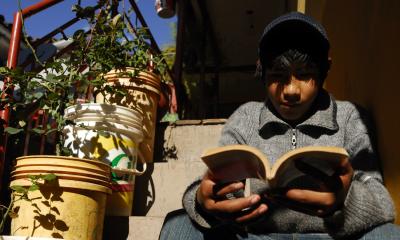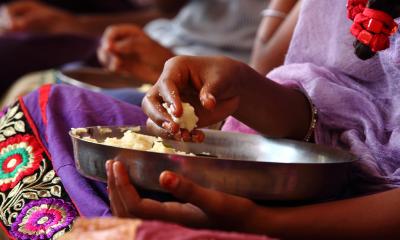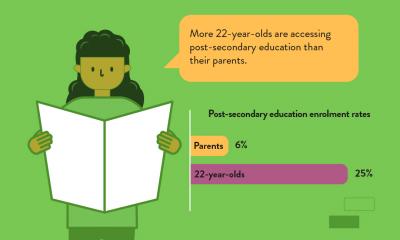
Large numbers of children in developing countries engage in forms of work, often alongside their schooling. Children’s work can include chores inside or outside the home or paid and unpaid activities outside the home.
Some work has negative impacts for children, in other cases, work may be an important way in which children develop and learn skills and are socialised into their families and communities. Note that the definitions of children in work can vary depending on a variety of information available from our data. It depends on the source of the information (e.g. whether it was answered by the child through the child questionnaire, or by the caregiver through the household survey), the reference period (e.g. ‘worked for at least an hour on a typical week’, or ‘worked for at least an hour in the last 12 months’), the type of payment involved (e.g. unpaid work, paid in cash only, paid in cash and/or in-kind), and the type of work (e.g. whether it includes domestic chores and/or care work).
Young Lives has followed both cohorts as they progress through different forms of work over time, monitoring its nature and motivations over time. In line with the sustainable development agenda, we are interested in the nature of full and productive employment and explore this in terms of employment status and incidence. So too, we are interested in early adulthood as a time when young people move from education and into work and choices around when to combine the two, remain solely in education or solely in work. In the previous survey (Round 5 in 2016) we focused on Older Cohort transitions to the labour market coupled with the move from adolescence into adulthood (Older Cohort children were aged 19 at Round 4 in 2014 and aged 22 at Round 5 in 2016).
In order to assess and define the incidence of paid work and its characteristics (what type of work this is, where it takes place, the sector in which it sits), we have included relevant questions across all survey rounds for the Older Cohort from Round 1 (in 2002, when the Older Cohort children were aged 8) through Round 5 (in 2016 when they were aged 22). These questions asked about any form of paid work (excluding domestic chores and care work) in which individuals were engaged for at least an hour in the 12 months prior to the survey interaction.
Large numbers of children in developing countries engage in forms of work, often alongside their schooling. Children’s work can include chores inside or outside the home or paid and unpaid activities outside the home.
Some work has negative impacts for children, in other cases, work may be an important way in which children develop and learn skills and are socialised into their families and communities. Note that the definitions of children in work can vary depending on a variety of information available from our data. It depends on the source of the information (e.g. whether it was answered by the child through the child questionnaire, or by the caregiver through the household survey), the reference period (e.g. ‘worked for at least an hour on a typical week’, or ‘worked for at least an hour in the last 12 months’), the type of payment involved (e.g. unpaid work, paid in cash only, paid in cash and/or in-kind), and the type of work (e.g. whether it includes domestic chores and/or care work).
Young Lives has followed both cohorts as they progress through different forms of work over time, monitoring its nature and motivations over time. In line with the sustainable development agenda, we are interested in the nature of full and productive employment and explore this in terms of employment status and incidence. So too, we are interested in early adulthood as a time when young people move from education and into work and choices around when to combine the two, remain solely in education or solely in work. In the previous survey (Round 5 in 2016) we focused on Older Cohort transitions to the labour market coupled with the move from adolescence into adulthood (Older Cohort children were aged 19 at Round 4 in 2014 and aged 22 at Round 5 in 2016).
In order to assess and define the incidence of paid work and its characteristics (what type of work this is, where it takes place, the sector in which it sits), we have included relevant questions across all survey rounds for the Older Cohort from Round 1 (in 2002, when the Older Cohort children were aged 8) through Round 5 (in 2016 when they were aged 22). These questions asked about any form of paid work (excluding domestic chores and care work) in which individuals were engaged for at least an hour in the 12 months prior to the survey interaction.




